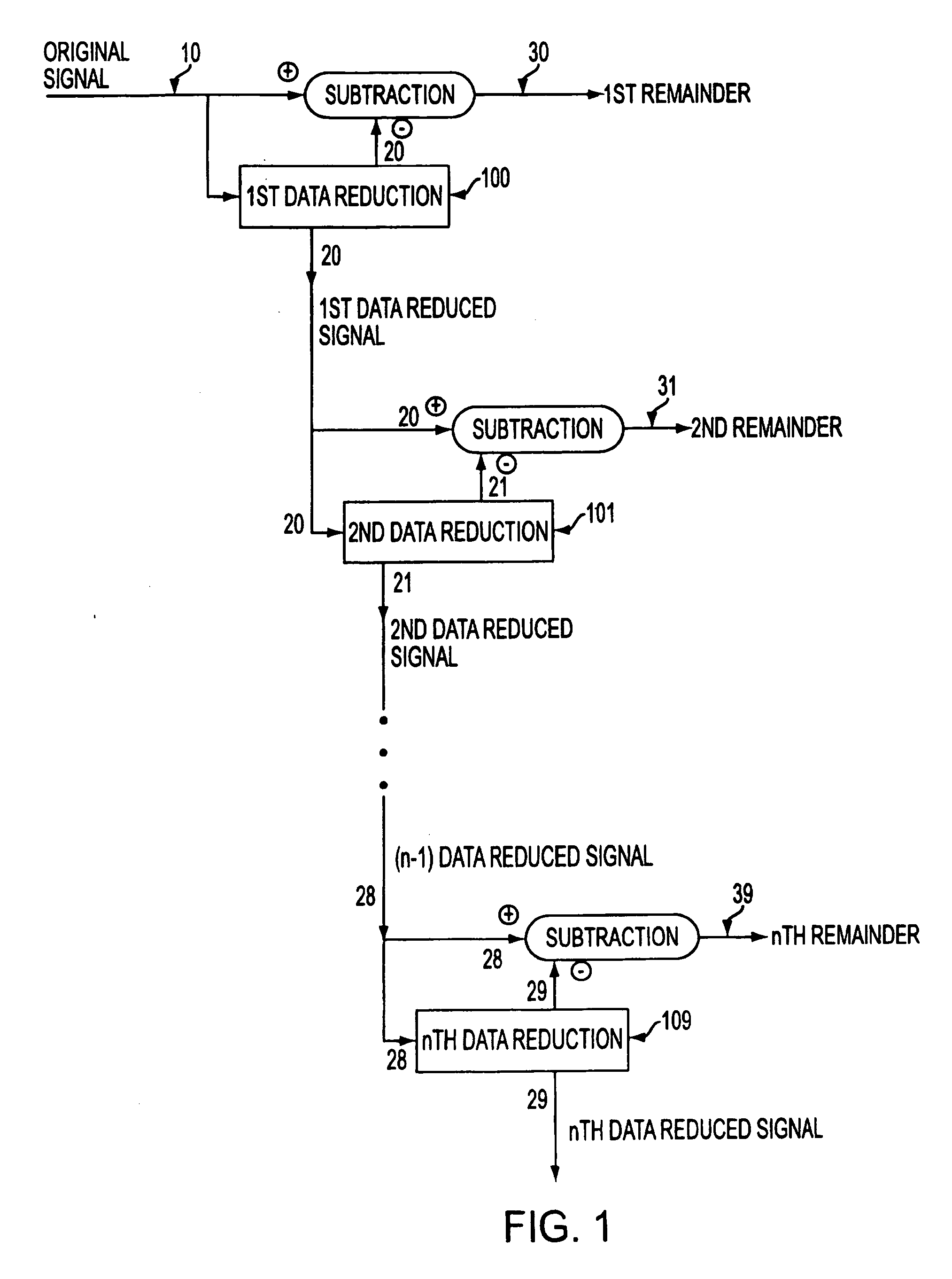Utilizing data reduction in steganographic and cryptographic systems
a cryptographic and data reduction technology, applied in the field of digital signal processing, can solve the problems of reducing the value of data, removing proper economic incentives for improving technology, and prior art not meeting these needs, so as to improve the security of increase the overall security of many applications, and improve the security of both scrambling and watermarking applications. the effect of reducing the risk of analysis
- Summary
- Abstract
- Description
- Claims
- Application Information
AI Technical Summary
Benefits of technology
Problems solved by technology
Method used
Image
Examples
embodiment
SAMPLE EMBODIMENT
Combinations
[0126] Another embodiment may combine both watermarking and scrambling with data reduction. Speed, performance and computing power may influence the selection of which techniques are to be used. Decisions between data reduction schemes ultimately must be measured against the types of keys or key pairs to use, the way any pseudo random or random number generation is done (chaotic, quantum or other means), and the amount of scrambling or watermarking that is necessary given the needs of the system. It is quite possible that some derived systems would yield a fairly large decision tree, but the present invention offers many benefits to applications in security that are not disclosed in the art.
[0127] As a further illustrative example of an advantageous embodiment, the following briefly describes an implementation of the present invention using sample rate reduction as the chosen data reduction method for watermarking in connection with an audio data signa...
PUM
 Login to View More
Login to View More Abstract
Description
Claims
Application Information
 Login to View More
Login to View More - R&D
- Intellectual Property
- Life Sciences
- Materials
- Tech Scout
- Unparalleled Data Quality
- Higher Quality Content
- 60% Fewer Hallucinations
Browse by: Latest US Patents, China's latest patents, Technical Efficacy Thesaurus, Application Domain, Technology Topic, Popular Technical Reports.
© 2025 PatSnap. All rights reserved.Legal|Privacy policy|Modern Slavery Act Transparency Statement|Sitemap|About US| Contact US: help@patsnap.com



